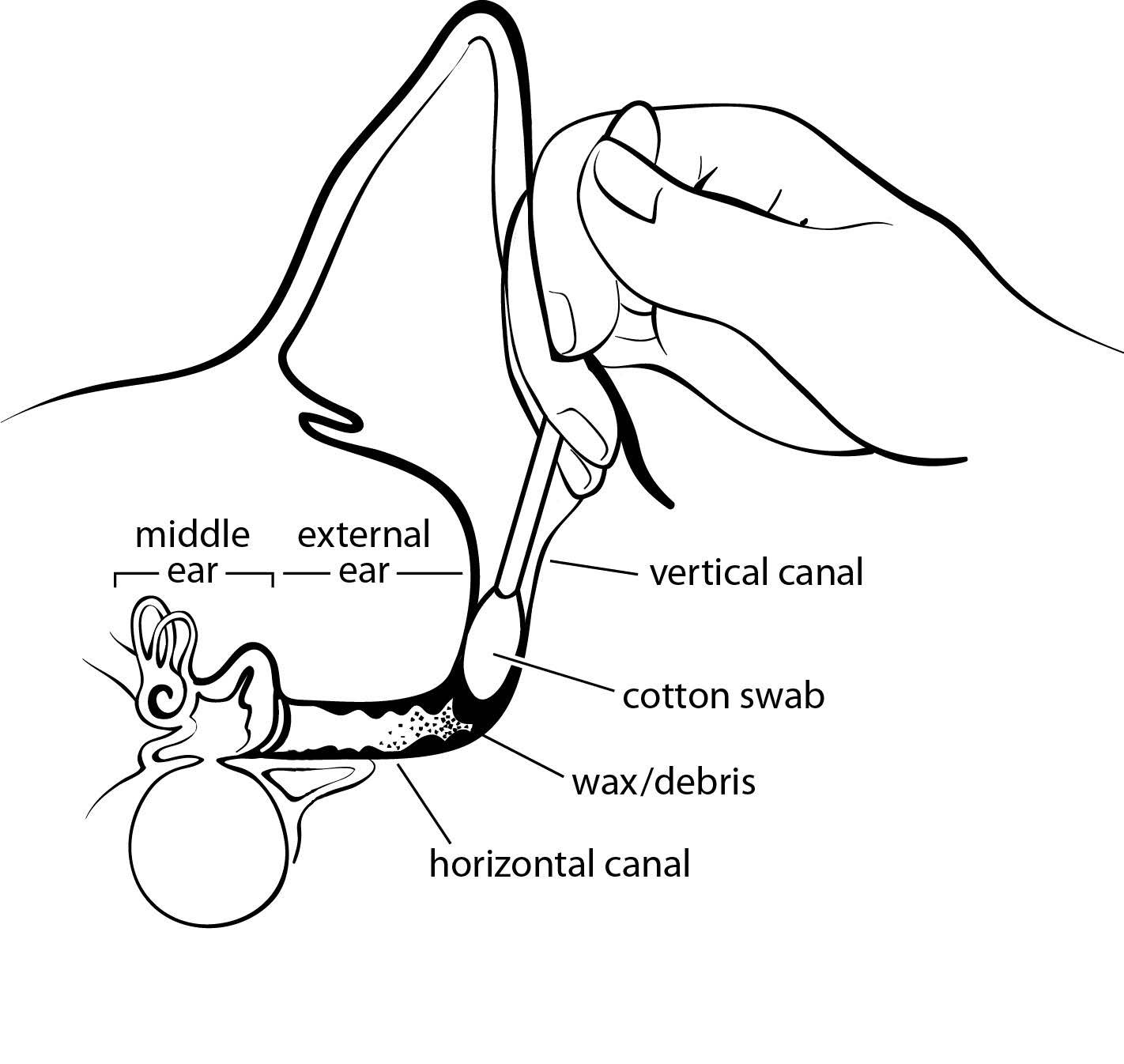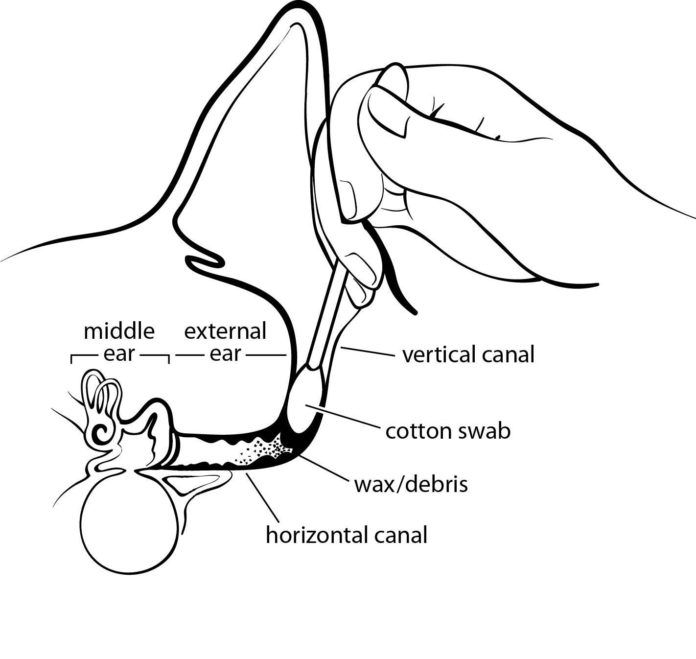Illustration by Beth Mellor

As much as physicians warn against using a cotton-tipped applicator such as a Q-tip for cleaning debris from your ears because of the risks for puncturing an eardrum and impacting wax, using one for cleaning a dog’s ears comes with even more risks. The canine ear canal is long and tapered and takes an almost 90-degree turn about halfway in, going abruptly from “down” to “across.” (See illustration.) If you insert a cotton swab, the fluffy tip will begin to fill the entire width of the ear canal as soon as it approaches that tight turn. That means you end up pushing wax and dirt deeper into the canal rather than removing it. There’s no room to do a bit of scraping along the sides and pull out the gunk. In fact, if you apply just a little too much pressure, the material you want to get rid of can be pushed right through the eardrum. Sometimes the cotton-tipped swab itself gets pushed with enough force to perforate the eardrum.
If you’ve gone the cotton swab route, you’re not alone. Using a cotton-tipped applicator is the most common mistake people make when trying to clean their dogs’ ears. What’s needed instead is a fluid solution that loosens the material, which then comes out when your pet shakes her head to get rid of the uncomfortable sensation of liquid in her ear.
It’s a good idea for dogs with drop, or floppy, ears, such as cocker spaniels and Bassett hounds. While the ears of prick-eared dogs like German shepherds will probably stay clean on their own, those with long ear flaps can accumulate dirt in the ear canal that predisposes them to otitis. That’s inflammation of the external ear that is virtually always accompanied by a bacterial or yeast infection. It can prove very uncomfortable in addition to potentially affecting hearing.
Other dogs besides those with floppy ears who would benefit from periodic ear cleanings with fluid solutions:
-Breeds with narrow ear canals, like shar peis.
-Brachycephalic breeds (who often have narrow ear canals), such as pugs.
-Dogs who live in humid climates, where wax buildup is more likely.
-Dogs with a lot of hairs in their ear canals that could trap foreign bodies.
-Dogs with allergies.
But which solution to use?
Choosing the right cleaning agent
You want to buy a commercial cleaning solution. There are many good brands on the market, but veterinary dermatologists will often mention the following: Epi-otic, Otoclean, Malacetic Ear Cleaner, Oti-clens, and Douxo.
Whichever one you purchase, use a dropper to apply it. It contains a gentle detergent that dissolves or loosens earwax and, in most cases, a drying agent that also acidifies. You want an acidic pH inside the ear canal because it prevents the proliferation of bacteria and the growth of other offending microorganisms such as yeast.
A small dog will need about four drops per ear to fill her ear canal; a larger dog, more like 12 drops. Follow the package directions.
Once you have applied the drops, softly massage your pet’s ear at its base to gently distribute the solution, and keep the dog from trying to shake it out for as long as possible. Once she does, she will do so vigorously, and the debris will exit along with the fluid. If you want, you can then use a cloth to wipe the part of your dog’s ear that you can see. Do not dig inside to the parts that are not visible.
How often?
If you have never cleaned your dog’s ears before and a lot of debris appears when she shakes her head for the first time, you may need to repeat the procedure every day, then every other day, then twice a week, until she reaches a point that once a week or once every two weeks does the trick for removing whatever wax has accumulated.
Your dog may not love having the drops applied, but she will like having her ears kept clean and will appreciate that you’re ministering to her needs. You will appreciate it, too. Periodic ear cleanings markedly reduce the foul odor that some dog ears produce when overgrown with bacteria and will also prevent problematic and costly ear infections that require doctor visits and treatment with antibiotics. In some cases, an ear infection could even require surgery.





